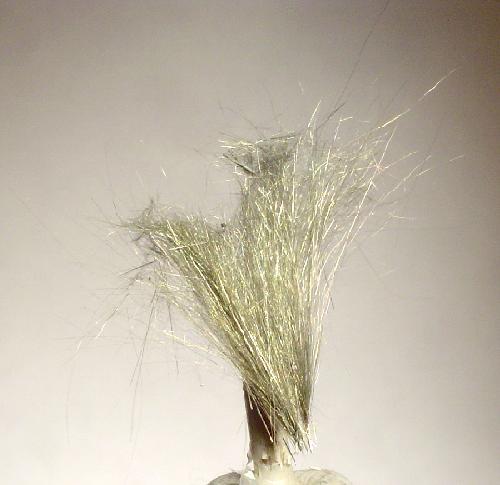Millerite Value, Price, and Jewelry Information
Millerite has a rich, attractive yellow color. Massive millerites can sometimes be cut into cabochons but are too soft for jewelry use. However, millerite crystals can also have a striking, hair-like appearance.
1 Minute Read
Millerite has a rich, attractive yellow color. Massive millerites can sometimes be cut into cabochons but are too soft for jewelry use. However, millerite crystals can also have a striking, hair-like appearance.
Start an IGS Membership today
for full access to our price guide (updated monthly).Millerite Price
Does Millerite Make a Good Jewelry Stone?
Although massive millerite occurs abundantly at certain locations, it generates little interest from jewelry enthusiasts. Its very low hardness (3 to 3.5) and perfect cleavage in two directions make it unsuitable for wear. Thus, as gem material for cabochons and even decorative objects, it rarely appears on the market. You're more likely to find cut millerites in rare gem collections, if at all, than jewelry collections.
Why is Millerite Sometimes Called "Hair Pyrite"?
As sprays of very thin capillary or filiform crystals, however, millerites take on an unusual, almost organic appearance. Sometimes called "hair pyrites," these millerites indeed resemble tufts of hair growing within geodes. These millerite formations are also flexible and soft and make very interesting additions to mineral and crystal collections.
Please note that millerite and pyrite are distinct mineral species. In the nickname "hair pyrite," pyrite refers to millerite's metallic luster and color.
How to Identify Millerite
Millerites show very weak pleochroism when viewed normally in air. However, in oil, they display more strongly. They show pale yellow-brown color on the ordinary ray and bright yellow color on the extraordinary ray.
Millerite leaves a greenish black streak. Keep in mind that streak testing can destroy the test sample. Conduct this examination only as a last resort for gem identification on rough, never on a finished gem.
Are There Synthetic Millerites?
Millerite serves as an important ore for the metal nickel. Thus, scientists use synthetic millerites to study the extraction of nickel from this mineral in laboratory settings. However, jewelry use of this lab-made material is unknown.
There are no known gemstone treatments for millerites.
Where is Millerite Found?
Antwerp, New York produces fine sprays of acicular crystals. The Gap Mine in Lancaster County, Pennsylvania produces acicular tufts.
Halls Gap, Kentucky and Missouri yield millerites as tufts of fibers in geodes.
Timagami, Ontario, Canada produces large cleavable masses.
Other notable sources include the following:
- United States: Illinois; Wisconsin; Iowa.
- Czech Republic; Germany; Slovakia; United Kingdom (Wales).
Stone Sizes
From massive material, gem cutters could cut cabochons or slabs of any size.
Caring for Millerites
See our gemstone jewelry cleaning guide for care recommendations.
Joel E. Arem, Ph.D., FGA
Dr. Joel E. Arem has more than 60 years of experience in the world of gems and minerals. After obtaining his Ph.D. in Mineralogy from Harvard University, he has published numerous books that are still among the most widely used references and guidebooks on crystals, gems and minerals in the world.
Co-founder and President of numerous organizations, Dr. Arem has enjoyed a lifelong career in mineralogy and gemology. He has been a Smithsonian scientist and Curator, a consultant to many well-known companies and institutions, and a prolific author and speaker. Although his main activities have been as a gem cutter and dealer, his focus has always been education. joelarem.com
International Gem Society
Related Articles
Unique Gem Materials for Jewelry Design
Black Diamond Value, Price, and Jewelry Information
Chameleon Diamond Value, Price, and Jewelry Information
Gray Diamond Value, Price, and Jewelry Information
Latest Articles
Milarite Value, Price, and Jewelry Information
Appraising Pearls: How to Grade Pearls
Agate Buying Guide
Carving Techniques for Handling Inclusions in Transparent Gems
Never Stop Learning
When you join the IGS community, you get trusted diamond & gemstone information when you need it.
Get Gemology Insights
Get started with the International Gem Society’s free guide to gemstone identification. Join our weekly newsletter & get a free copy of the Gem ID Checklist!
